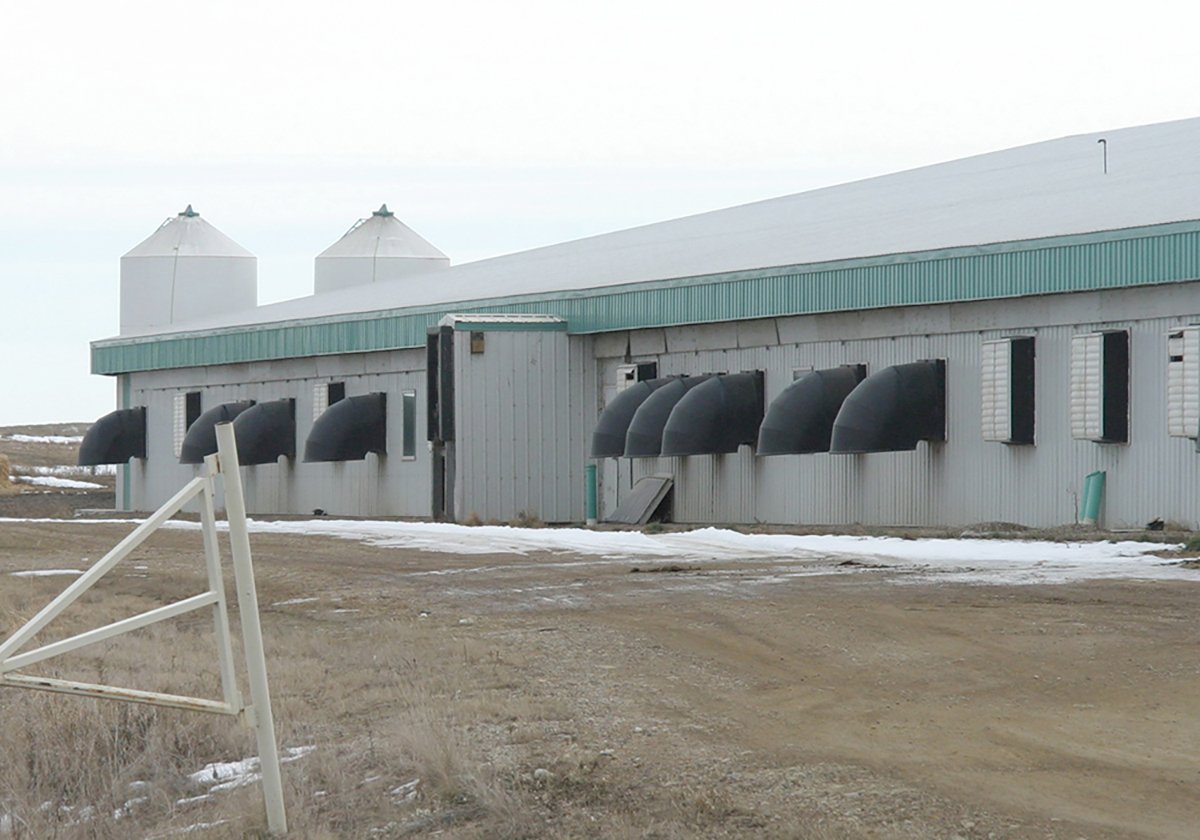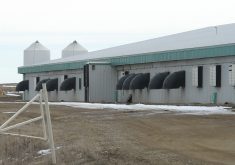ALBERTA
South
Silage good
Haying continues in the Special Areas with good yields but average quality. Generally cereal crops look good, but the frost threat is a concern. Feedlot operators are putting up a good silage crop at Picture Butte, while cereal harvesting has begun at Taber. Potato and sugar beet harvests are about to begin. Dryland farmers are pleased with yields, but yields are down in irrigated areas.
Central
Hay quality poor
Read Also

Prairie farms race to be ready for winter 2025
Equipment needs to be winterized and stored; fall field work needs to be done and there are a million tiny jobs to make sure both the farm yard and farm house are ready for the snow to fly
Rain and cool weather have halted harvest progress. Swathing of canola is underway in early seeded fields. Haying is ongoing with farmers baling varying qualities. Farmers are putting some lodged crops directly into silage pits. Second cut of hay is underway with farmers hoping for better quality.
Northwest
Crops lodged
Weather in the northwest feels like the beginning of winter. Continual rain and drizzle have hampered harvest. Some timothy has been swathed and winter wheat harvested. Some canola has been swathed in parts of the region. Generally cereal and canola crops look great, but warm weather is needed. Silage is mostly complete. A lot of lodged crops ended up in the silage pit.
Northeast
More heat needed
Rain and cold weather have slowed harvest progress. More heat and sun are needed. Some pea harvest has begun. Some fields of early canola are starting to be swathed. Most of the hay is finished. Lots of hay is in bales, but quality is questionable.
Peace &B.C.
Rain a problem
Rain has hampered harvest operations and may downgrade remaining crops. Yields vary from average to poor. There are reports of canola yielding five to 20 bushels per acre and wheat ranging from 10 to 30 bu. per acre. Pastures are dried up and cattle producers are beginning to sell herds. Dugouts are also drying up.
MANITOBA
Southwest
Good barley yields
Rain over the past week slowed harvest. Winter wheat and fall rye harvest is complete with average to above average yields and average quality. Spring wheat harvest ranges from little north of the Trans-Canada Highway to 40 percent complete south of the highway. Barley harvest is well under way with good yields and quality reported. Many acres are still under water. The majority of the canola has been cut. Pea harvest is almost finished with average to below average yields.
Central
Some flax harvested
Cereal grain harvest is mostly complete. Wheat yields are average to above average. Canola is maturing and harvest is progressing. Good grades are also reported. Flax is ripening with some harvested. New potato harvest is expected to begin shortly.
Eastern
Canola pod shattering
Hard red spring yields vary drastically within the region and range from 15 to 60 bu. per acre with average to below average quality. Significant progress was made with the oat harvest with yields ranging from 30 to 120 bu. per acre. Strong, gusty winds caused canola pod shattering. Canola harvest is about 75 percent complete with yields ranging from 10 to 40 bu. per acre.
Interlake
Fusarium a problem
Harvest is 30 to 60 percent complete. Spring wheat yields range from 10 to 45 bu. per acre with varying quality. Fusarium head blight is affecting quality. Oat yields range from 40 to 100 bu. per acre. Canola yields range from 12 to 45 bu. per acre.
Northwest
Cereals ripening
Cereals are 80 to 90 percent ripe with about 70 percent of the acres swathed or given pre-harvest treatments. Initial wheat yields are 15 to 55 bushels per acre. Some hard red spring wheat is grading No. 1, but No. 2 grades are not uncommon. Most of the canola is swathed, but little has been combined. Field peas and forage grass seed harvest continues.
SASKATCHEWAN
Southwest
Crops damaged by hail
Some rain fell on the area over the past week. One-third of the winter wheat and fall rye is harvested. Lentil, pea, mustard and canola harvest has begun. Haying is almost finished with quality ranging from excellent to fair. Many crops have been lodged by high winds and some fields were damaged by hail.
Southeast
Baling hay difficult
Heavy rain across the region slowed harvest. Swaths were under water and low-lying areas were submerged. About five percent of the crop is combined and 18 percent swathed or ready to straight cut. Rain has reduced hay quality and made baling difficult. Many areas are one to two weeks behind development.
West-Central
Harvest delayed
Rain slowed the start of harvest. A few fields of winter wheat, fall rye and field peas have been combined. Haying continues to be a struggle as farmers try to pick up swaths between showers. The majority of crop damage is due to disease. Pulses, particularly lentils, are showing high disease pressures, causing quality issues.
East-Central
Armyworms reported
Rain stalled hopes of starting harvest. Most of the hay has been cut and either baled or put into silage with varying quality. Reports of bertha armyworms in the Stockholm region have farmers trying to control the pest. Many crops are lodged because of heavy rain and winds.
Northwest
Disease reported
Rain was widespread throughout the region. Haying continues, but progress is slow. Some farmers have begun a second cut of hay, hoping for better quality. Flooding and wind have caused crop damage. Disease pressures in pulses have also caused damage. Peas are being desiccated.
Northeast
Cold weather
All parts of the region received rain and temperatures dropped to 5 C in some areas. Combining of winter wheat and fall rye has begun. Canola, peas and oats are being swathed or desiccated. Rain, high humidity and heavy dew interrupted haying. Crop damage from flooding, disease and hail was reported. Harvest and weed control equipment is getting stuck in fields. Harvest is not expected to be be in full swing for about two weeks.














